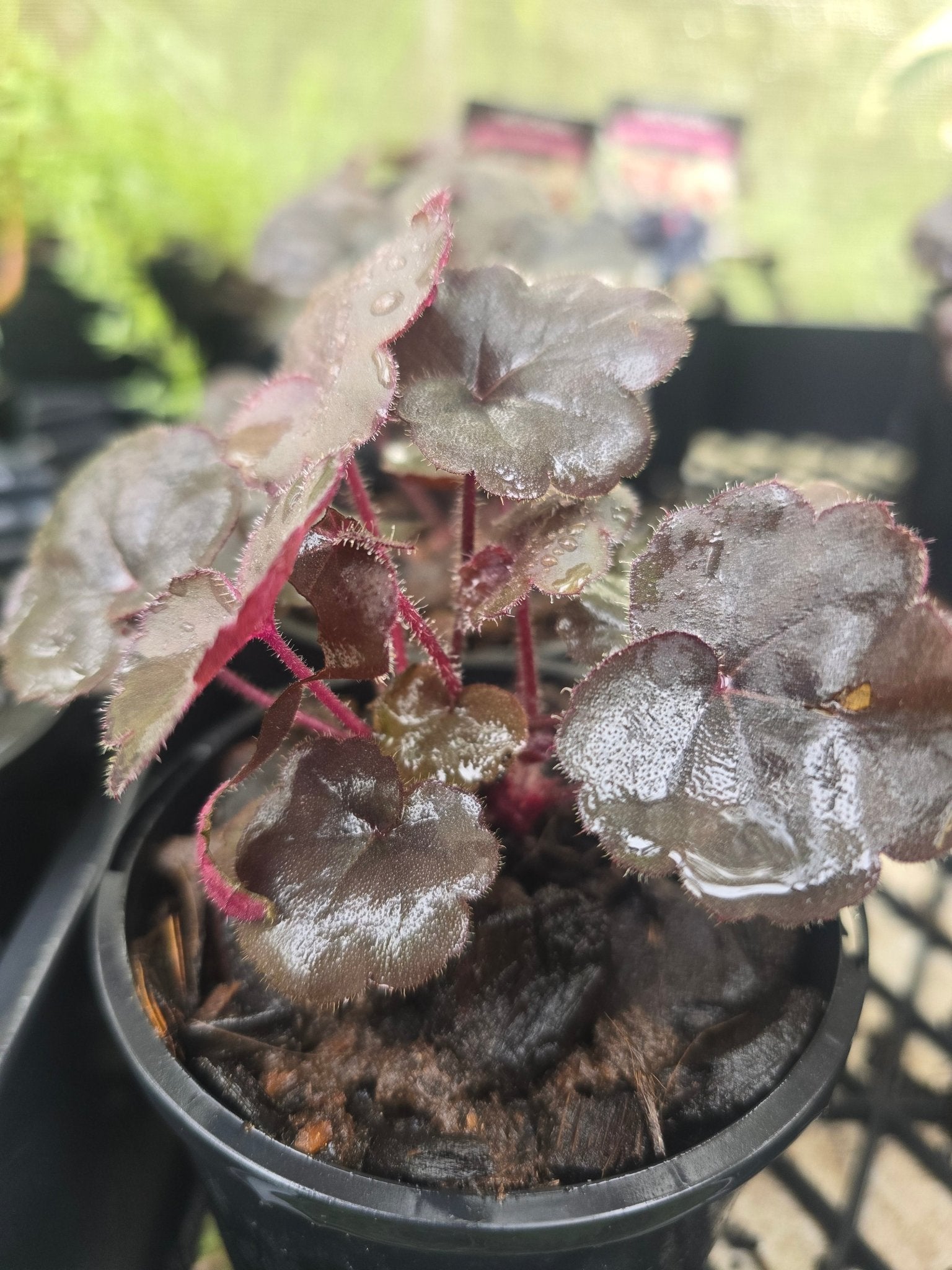
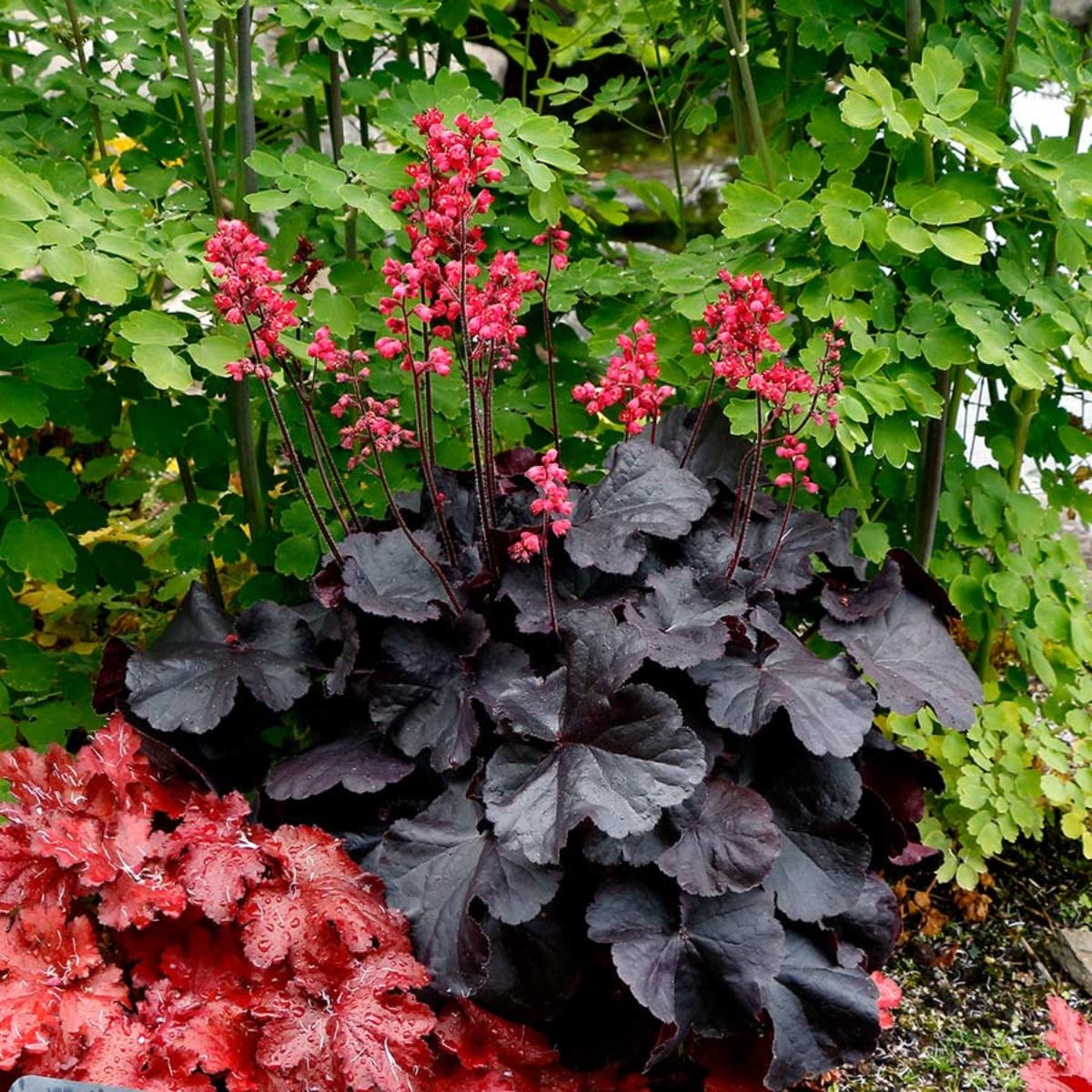
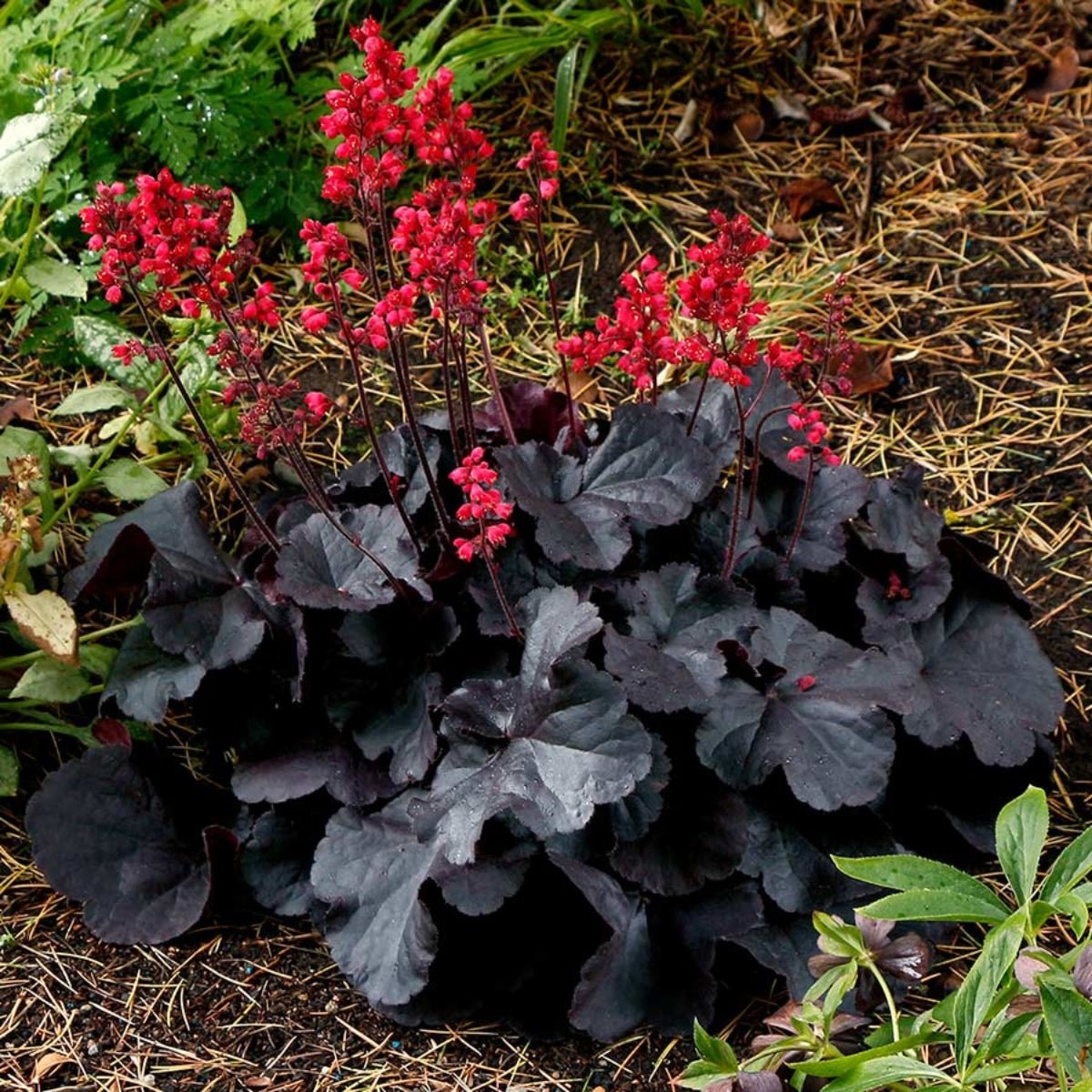
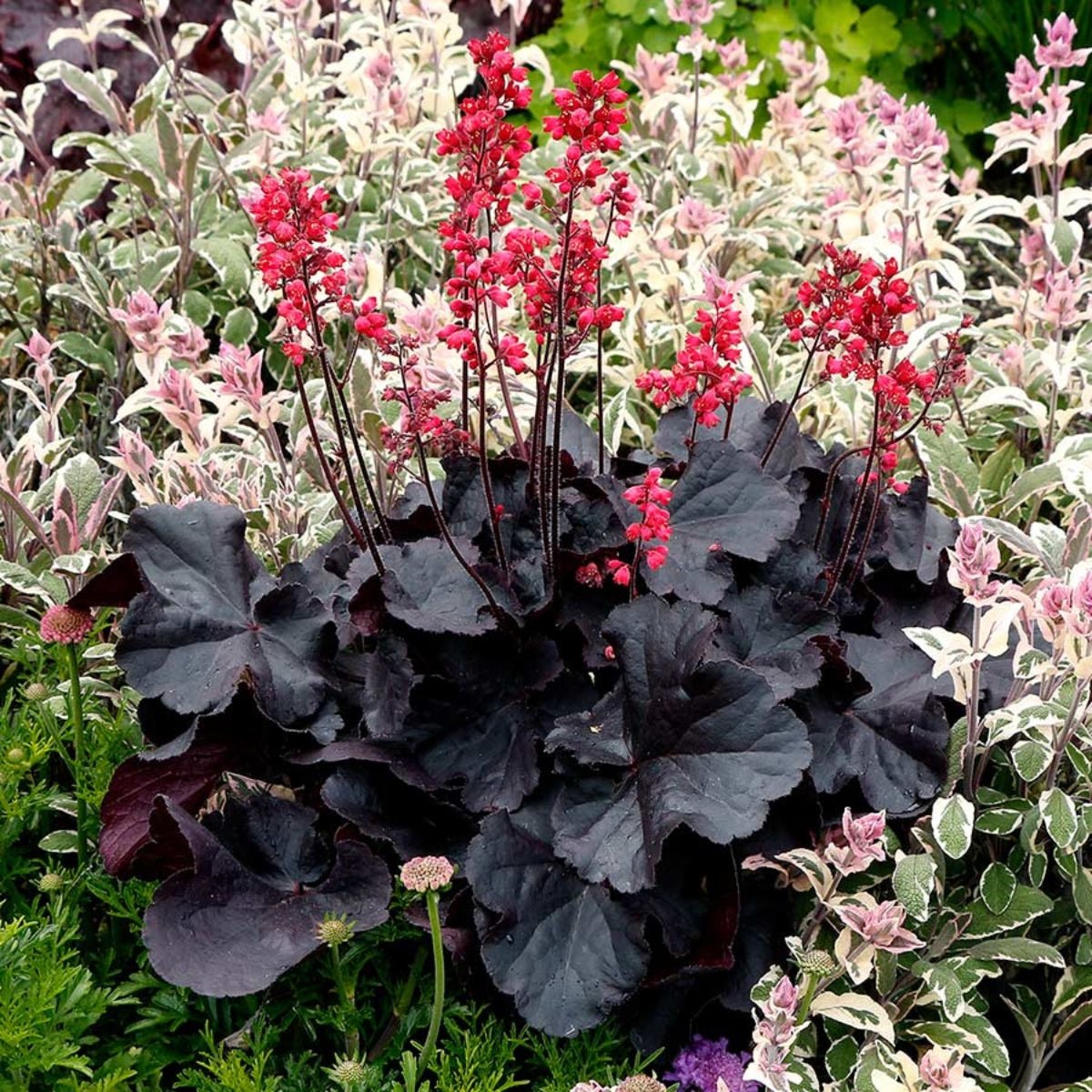
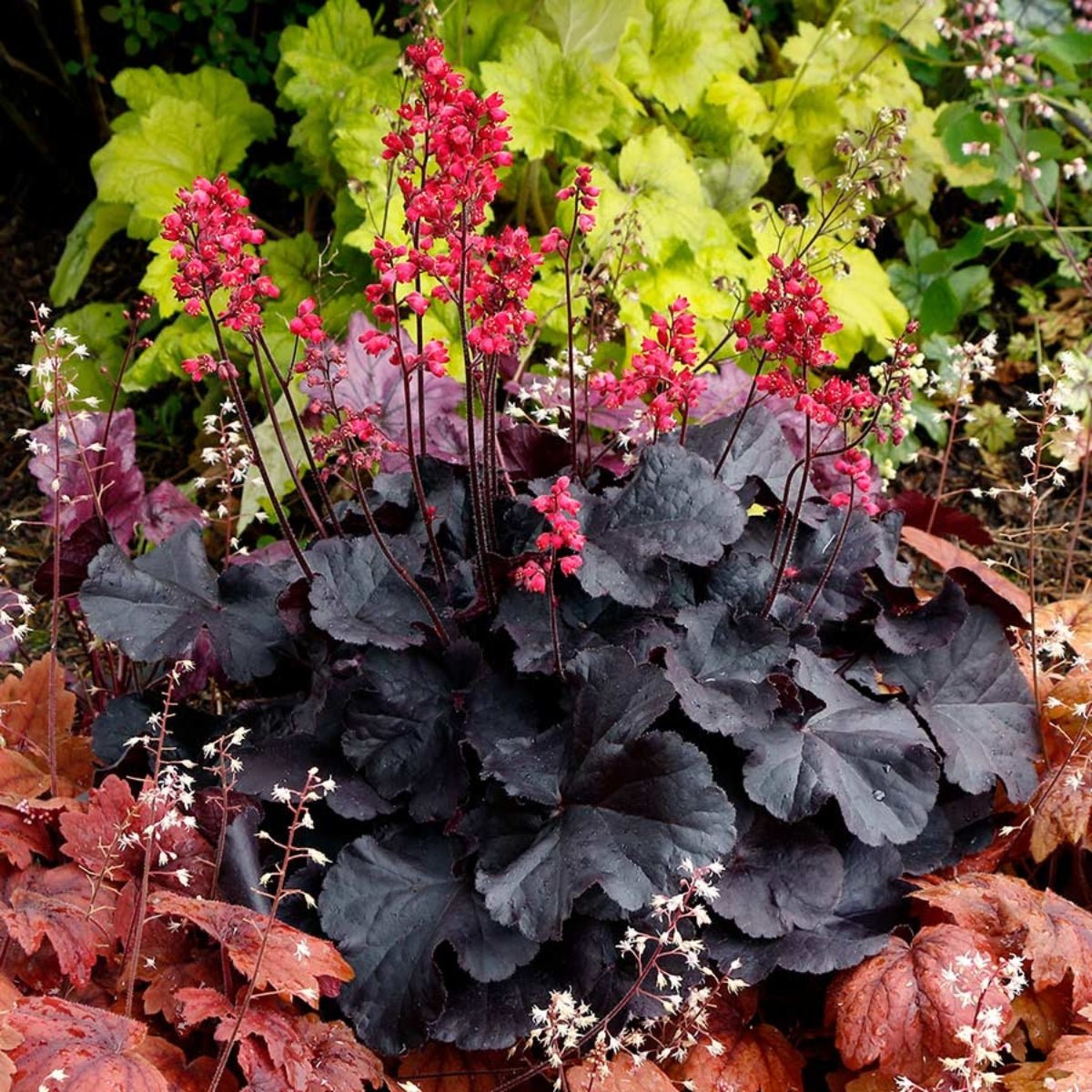
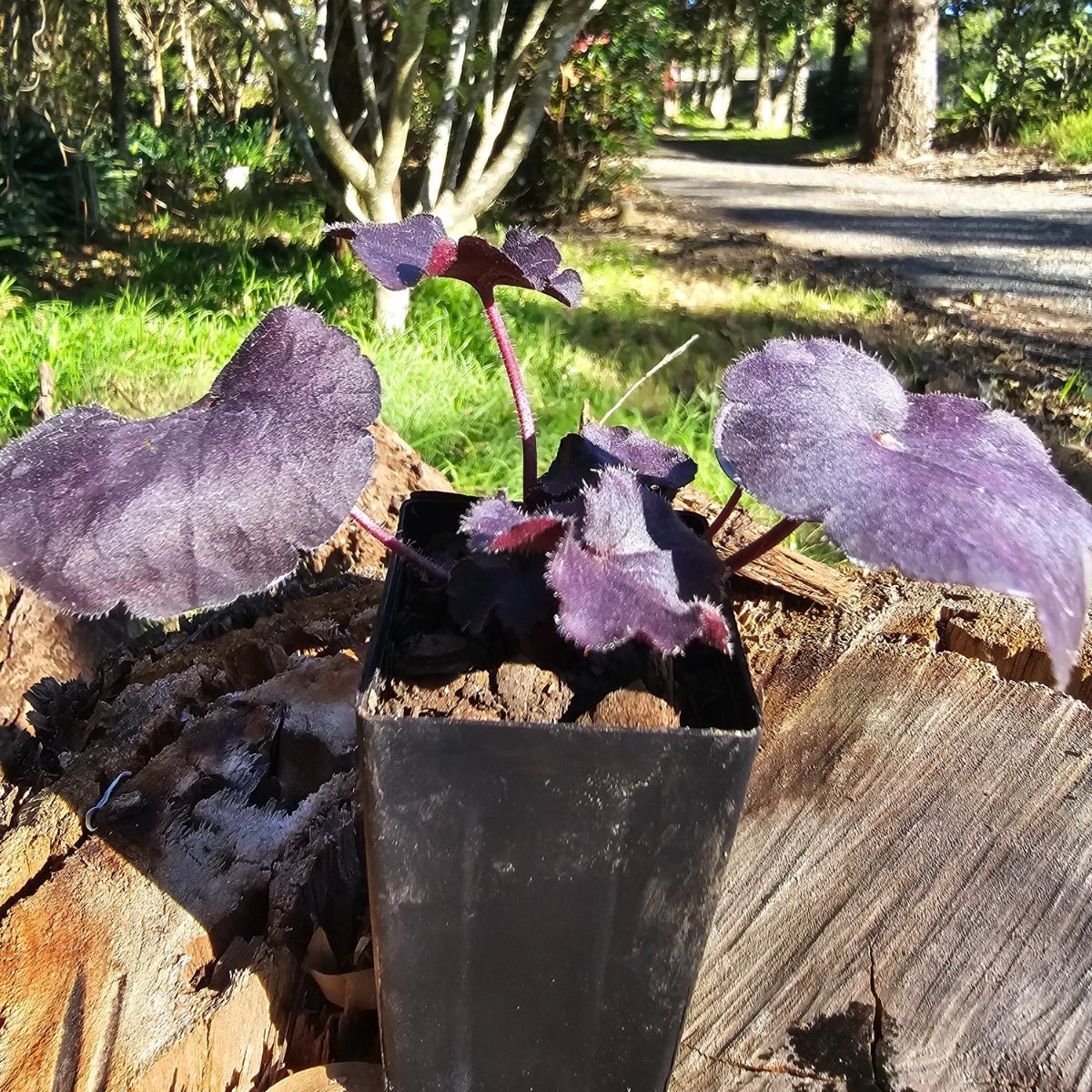
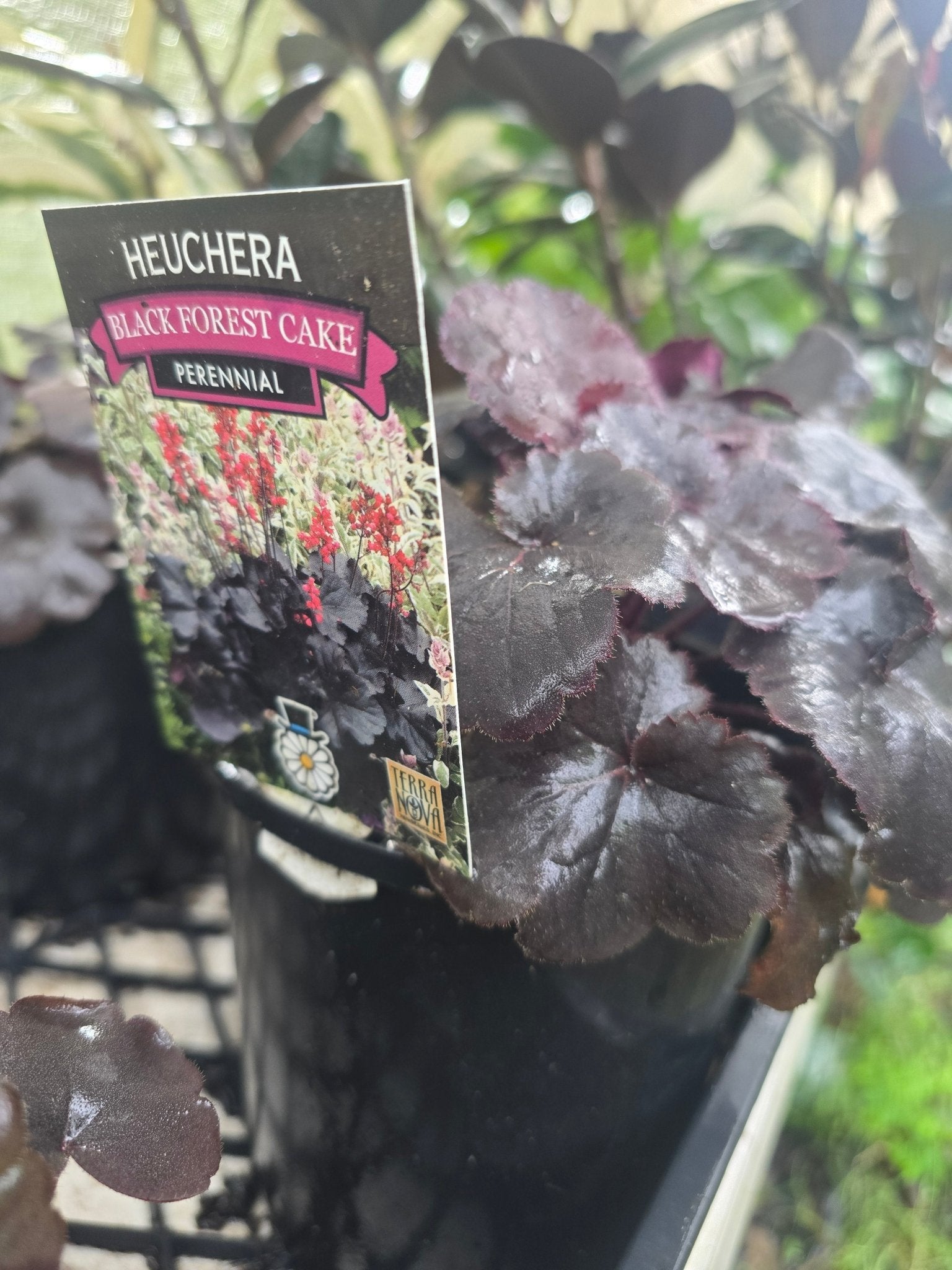
Description
Heuchera villosa ‘Black Forest Cake’ (Saxifragaceae) is a striking perennial that adds dramatic flair to any garden. With its rich, dark burgundy to near-black foliage, this Heuchera is reminiscent of its namesake dessert, creating a lush, velvety ground cover or container feature. Known for its bold, textured leaves and impressive heat and humidity tolerance, 'Black Forest Cake' thrives in a variety of conditions, making it perfect for adding depth and contrast to your landscape. Whether used in mixed borders or as a standout accent, this Heuchera is sure to captivate with its dark, sophisticated charm.
Botanical Name: Heuchera Villosa
Common Name: Coral Bells
Family: Saxifragaceae
Origin: Hybrid variety
Plant Type: Herbaceous perennial
Height: 20-30 cm (8-12 inches)
Spread: 30-45 cm (12-18 inches)
Frost: Moderate - Down to about -4 to -5°C maximum
Foliage:
- Colour: Deep, dark purple to nearly black leaves with a glossy finish
- Shape: Rounded with slightly scalloped edges
- Texture: Smooth, leathery
Flowers:
- Bloom Time: Late spring to early summer
- Colour: Small, white to light pink flowers
- Inflorescence: Borne on slender, wiry stems above the foliage
Growing Conditions:
- Light: Partial shade to full shade (tolerates some morning sun)
- Soil: Well-drained, fertile soil rich in organic matter
- pH: Neutral to slightly acidic
- Water: Regular watering to maintain consistent moisture, but well-drained soil is crucial
Hardiness: Suitable for Australian Zones 7-9. Heuchera 'Black Forest Cake' prefers cooler climates and may not perform well in the hottest regions (zones 1-6).
Tropical Zone (Zones 1-2)
- Climate: Warm winters and hot, humid summers. Highest temperatures average above 30°C.
- Regions: Northern coastline from Broome (west coast) through Darwin (north) to Cairns and Rockhampton (east coast).
Subtropical Zone (Zones 3-4)
- Climate: Mild winters and average highs under 30°C in summer.
- Regions: Stretches from Geraldton and Carnarvon (west coast) to Rockhampton (east coast), then southwards to Brisbane, through Coffs Harbour to Sydney.
Arid Zone (Zones 5-6)
- Climate: Hot, dry summers with warm winters in the north and temperatures dropping to an average minimum of -5°C further south.
- Regions: Extends from Western Australia to the Great Dividing Range, including Alice Springs (north), sections of Queensland, South Australia, New South Wales, and part of Victoria.
Temperate Zone (Zones 7-8)
- Climate: Warm summers with low humidity in the north and mild winters with an average annual minimum low of 5°C.
- Regions: Includes coastal areas from Perth to Melbourne and south of Sydney, lower parts of New South Wales tablelands, and part of Queensland's interior.
Cool Zone (Zone 9)
- Climate: Warm summers transitioning to cold, frosty winters with some snow. Annual lowest temperature averages between -5°C and 0°C.
- Regions: Most of Tasmania, Canberra, and the ACT, high mountain and tableland areas in Southeast Queensland, New South Wales, and Victoria.
Maintenance:
- Low maintenance
- Remove spent flower stalks to encourage more blooms
- Trim back old foliage in early spring before new growth starts
Uses:
- Ideal for borders, containers, ground cover, and shade gardens
- Adds dramatic foliage color to garden designs
- Attractive to bees and other pollinators
Supplied as: 50mm pots
Planting Instructions:
- Dig a hole twice the width of the pot and slightly shallower than the pot height.
- Place the plant in the hole, ensuring the crown is level with the soil surface.
- Backfill with soil, gently firming around the roots.
- Water thoroughly after planting.
- Mulch around the base to retain moisture and suppress weeds.
Care Tips:
- Apply a balanced, slow-release fertilizer in spring.
- Divide clumps every 3-4 years to rejuvenate and control spread.
- Monitor for common pests like aphids, snails, slugs, and caterpillars, and treat accordingly.
Photo(s) courtesy of TERRA NOVA® Nurseries, Inc.









